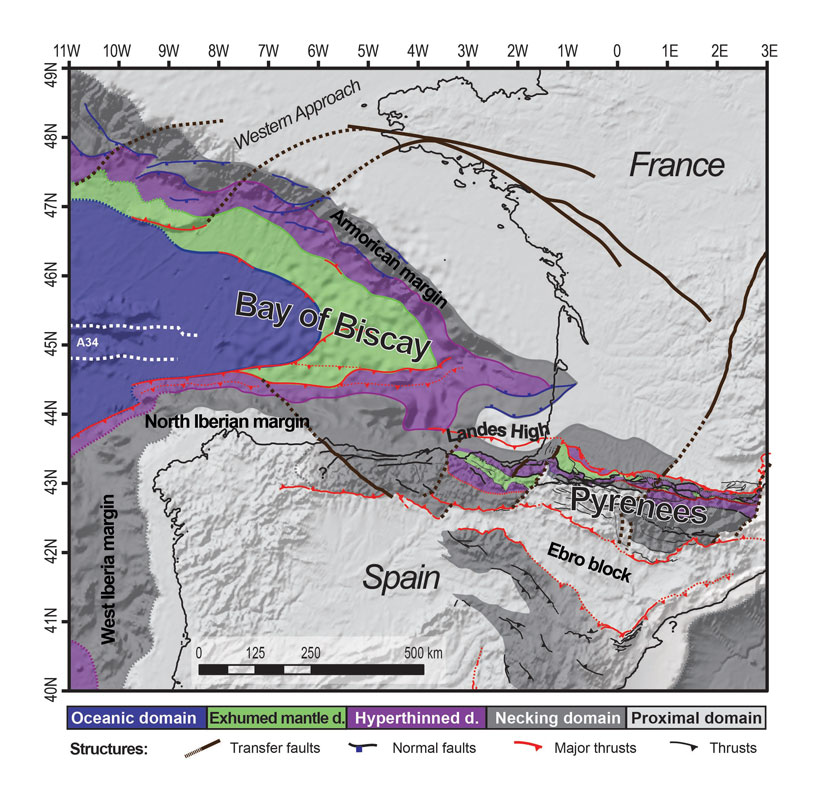Forming a natural geographic border between France and Spain, the Pyrenees Mountains were built over millions of years as continents collided. Mountains develop on the sites of former oceans and rift systems, yet a record of this precollision geologic history does not often survive the process of mountain building. In the case of the Pyrenees, however, Tugend et al. found that by looking in the nearby Bay of Biscay, located off the western coast of Spain and France, they could get a glimpse of the precollision crustal architecture in the region.
Previous studies indicate that before it became the Pyrenees Mountains, the continental crust in the region was stretched and thinned by rifting. Although the eastern section of this rift system was folded and compressed to make the Pyrenees, the weather section is preserved in the Bay of Biscay.
Using seismic, gravity, and field mapping observations, the authors identified and mapped several former rift systems from the Bay of Biscay to the Pyrenees. Using these geological and geophysical observations, the authors found that the architecture of the former rift systems strongly controlled the formation of the Pyrenees Mountains. (10.1002/2014TC003529)
—Colin Schultz, Writer
© 2014. American Geophysical Union. All rights reserved.
© 2014. American Geophysical Union. All rights reserved.

